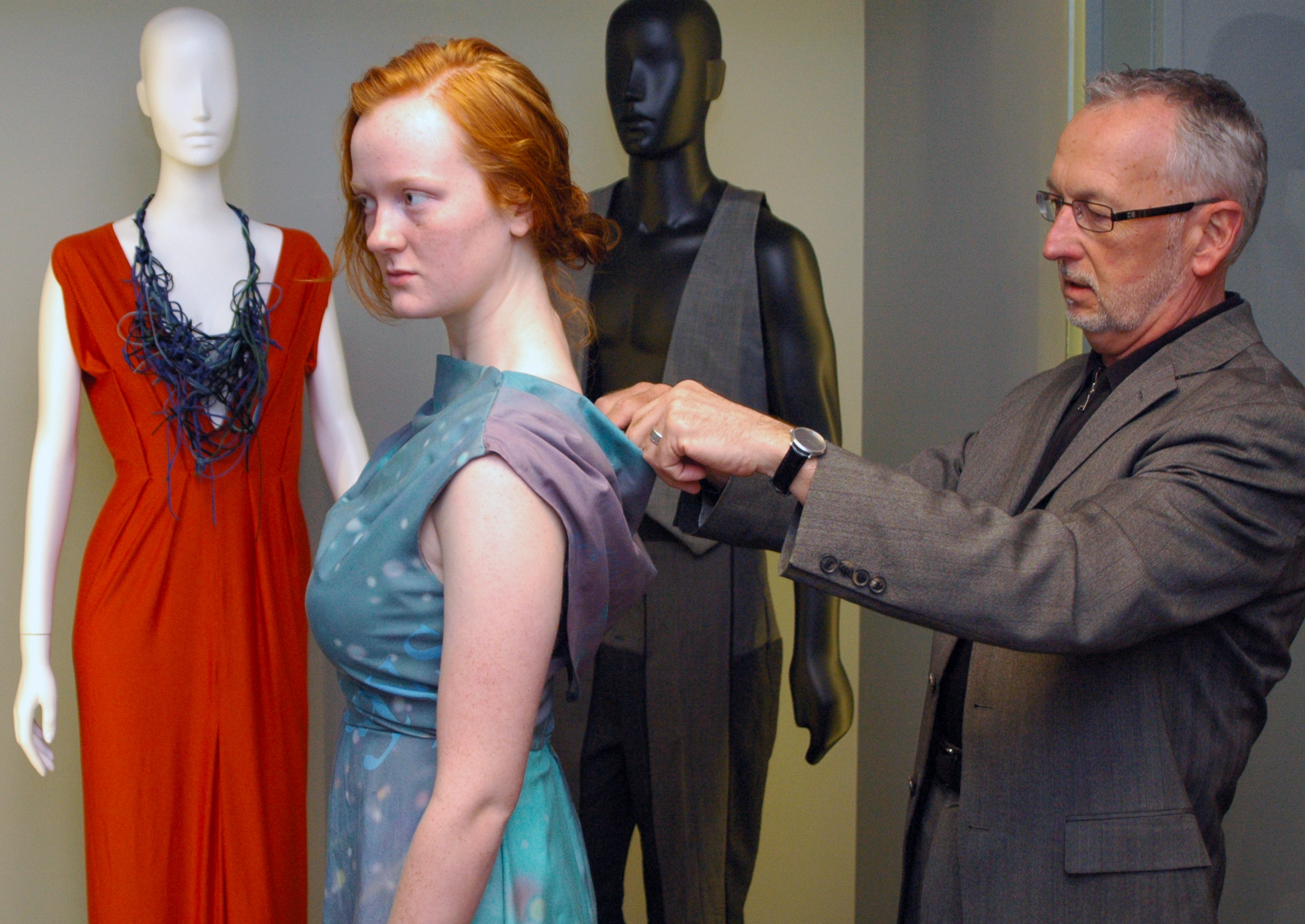
Call it "wearable words."
At tonight’s biennial fashion show hosted by the textiles, clothing and design department, a collection merging apparel and text analysis will make its runway debut.
“I love this idea of having these separate domains and if we overlap them, we can do some interesting stuff,” said Brian Pytlik Zillig, associate professor and digital initiatives librarian at the Center for Digital Research in the Humanities. “To my knowledge, I’ve never heard of anyone intersecting the domains of text analysis with textile and clothing design.”
Five years ago, Zillig wrote a component for his text analysis software TokenX, which searches groups of texts for n-grams, or patterns of repeating sequences. Twenty garments will be presented on the runway that are made from fabrics featuring textual imagery derived from Zillig’s files.
The collection stems from a UCARE project headed by TCD department chair Michael James and two students, junior apparel design major Kendra Morgan and sophomore communication studies major Preston Kelley.
“Essentially, our collection runs the gamut from sportswear to more formal wear, but all of it has an out-of-the-box sensibility,” James said. “The silhouettes are not extreme, but the prints are definitely unusual, artful and provocative at the same time.”
The UCARE collection garments will feature n-grams from the poetry of Walt Whitman.
“They’re all references to something about beauty,” Zillig said. “Because they’re snippets, you can’t always tell what the surrounding context was. But my argument is that they have a new kind of power because they’re now dwelling in this artistic space.”
To supplement the collection’s debut, Zillig created a six-minute movie with images of distorted text placed against animated backgrounds. The movie will be projected on the walls that will occupy the vertical spaces on both sides of the runway.
“What I was trying to do was generate this sensation of depth and movement and shifting colors,” Zillig said. “What happens when we deform texts and make them rotate and intersect in different ways?”
Zillig’s movie will even have its own original soundtrack, compliments of Damon Lee, associate professor of composition and digital arts in the School of Music. Lee and five of his students used synthesizers to produce a score that will play as models walk the runway.
“When I heard the piece from Damon and his crew, I thought, ‘Wow, this is fantastic,’” Zillig said. “It’s the kind of thing that captures your attention for the entire six minutes.”
Although this interdisciplinary collaboration is the first of its kind, Zillig said it won’t be the last.
“I’m very grateful to Michael James for his enthusiasm and for his way of imagining how this collaboration might work,” Zillig said. “We have some other ideas. I don’t think this runway show is going to be the end of it. I think it’s just the beginning.”
The Power of Fashion 7th TCD Biennial Student Show is a sellout. It begins at 8 tonight at the Nebraska Union Centennial Ballroom. Doors open at 7:30 p.m.
— Mekita Rivas, University Communications
More details at: http://go.unl.edu/skt